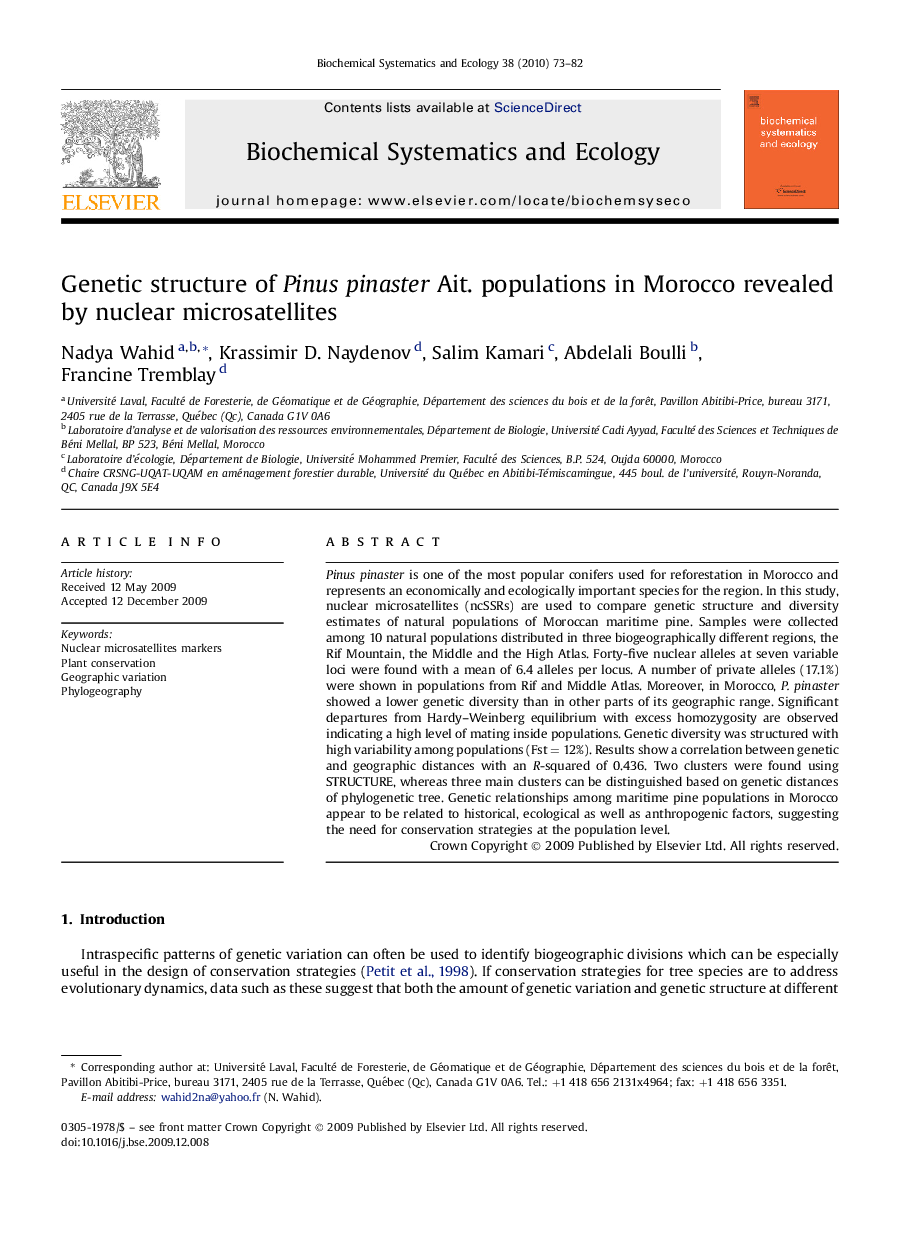| Article ID | Journal | Published Year | Pages | File Type |
|---|---|---|---|---|
| 1354493 | Biochemical Systematics and Ecology | 2010 | 10 Pages |
Pinus pinaster is one of the most popular conifers used for reforestation in Morocco and represents an economically and ecologically important species for the region. In this study, nuclear microsatellites (ncSSRs) are used to compare genetic structure and diversity estimates of natural populations of Moroccan maritime pine. Samples were collected among 10 natural populations distributed in three biogeographically different regions, the Rif Mountain, the Middle and the High Atlas. Forty-five nuclear alleles at seven variable loci were found with a mean of 6.4 alleles per locus. A number of private alleles (17.1%) were shown in populations from Rif and Middle Atlas. Moreover, in Morocco, P. pinaster showed a lower genetic diversity than in other parts of its geographic range. Significant departures from Hardy–Weinberg equilibrium with excess homozygosity are observed indicating a high level of mating inside populations. Genetic diversity was structured with high variability among populations (Fst = 12%). Results show a correlation between genetic and geographic distances with an R-squared of 0.436. Two clusters were found using STRUCTURE, whereas three main clusters can be distinguished based on genetic distances of phylogenetic tree. Genetic relationships among maritime pine populations in Morocco appear to be related to historical, ecological as well as anthropogenic factors, suggesting the need for conservation strategies at the population level.
